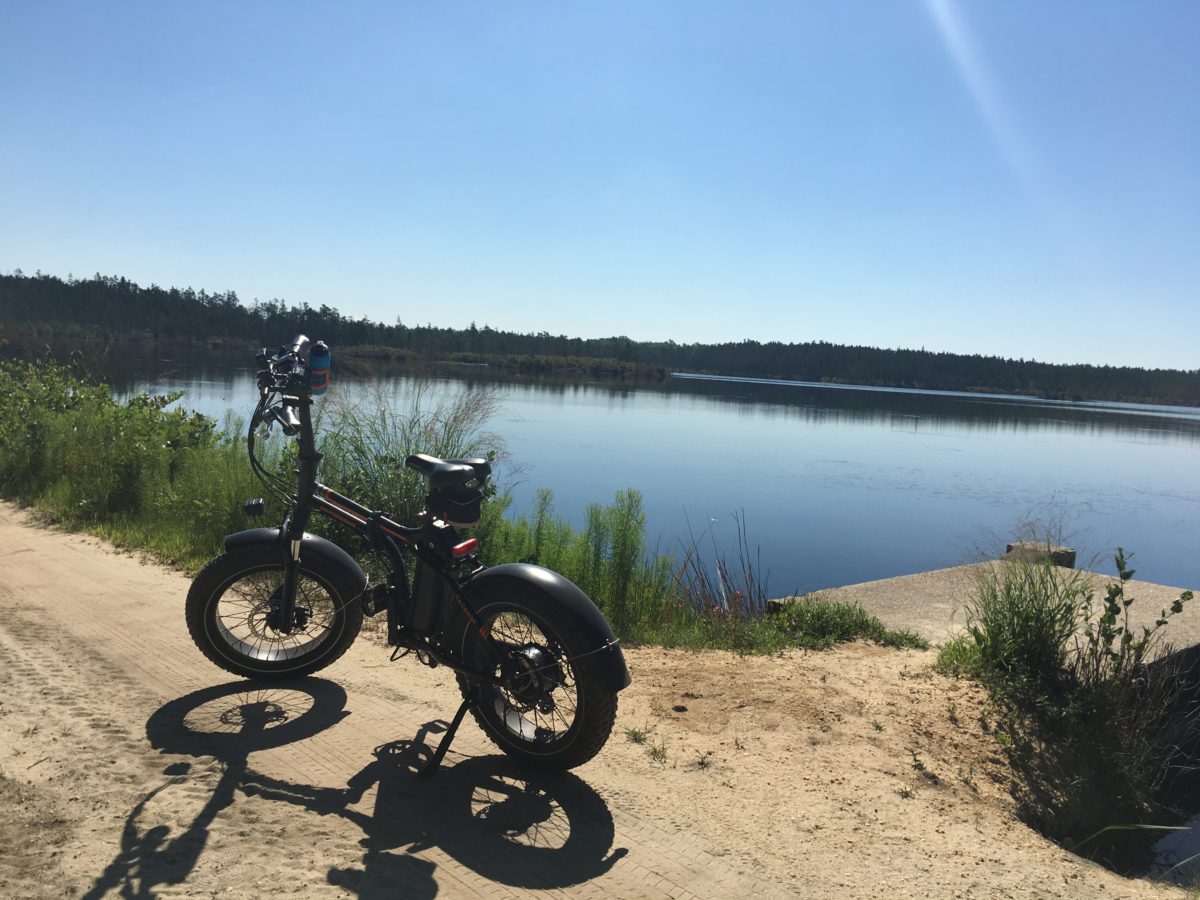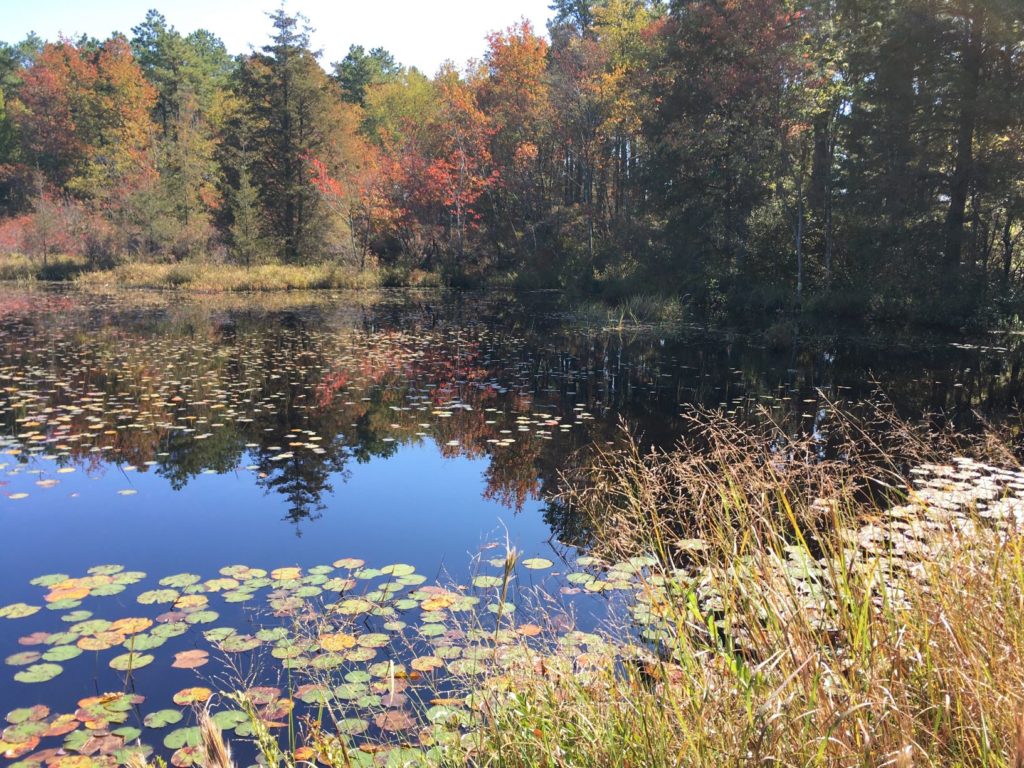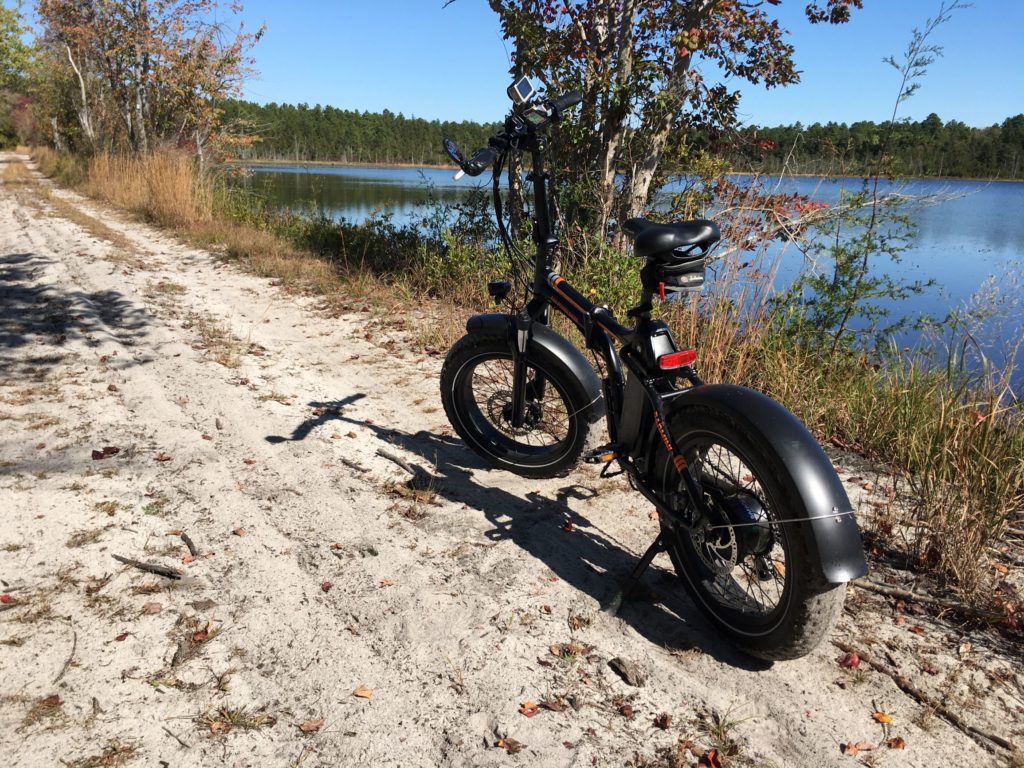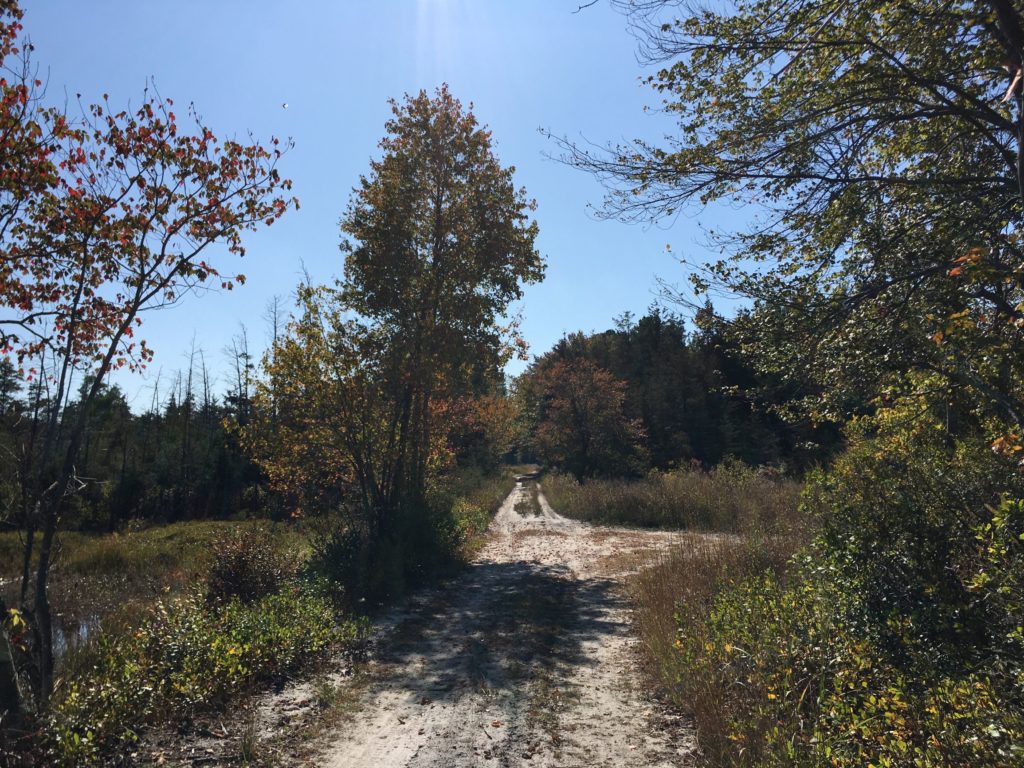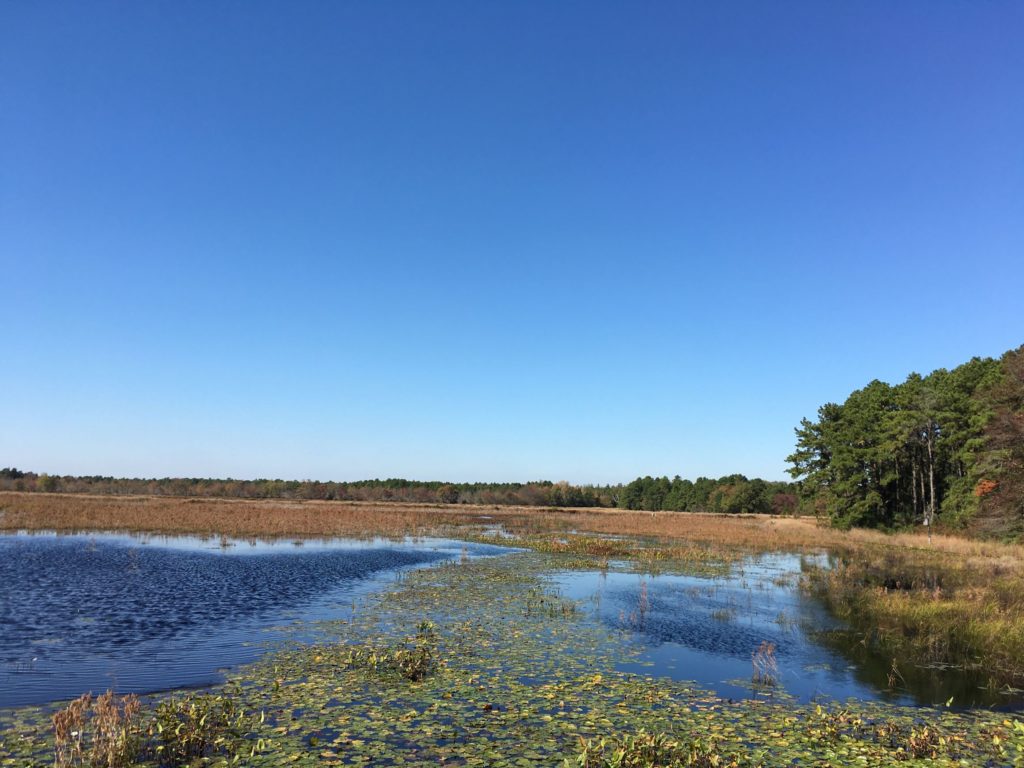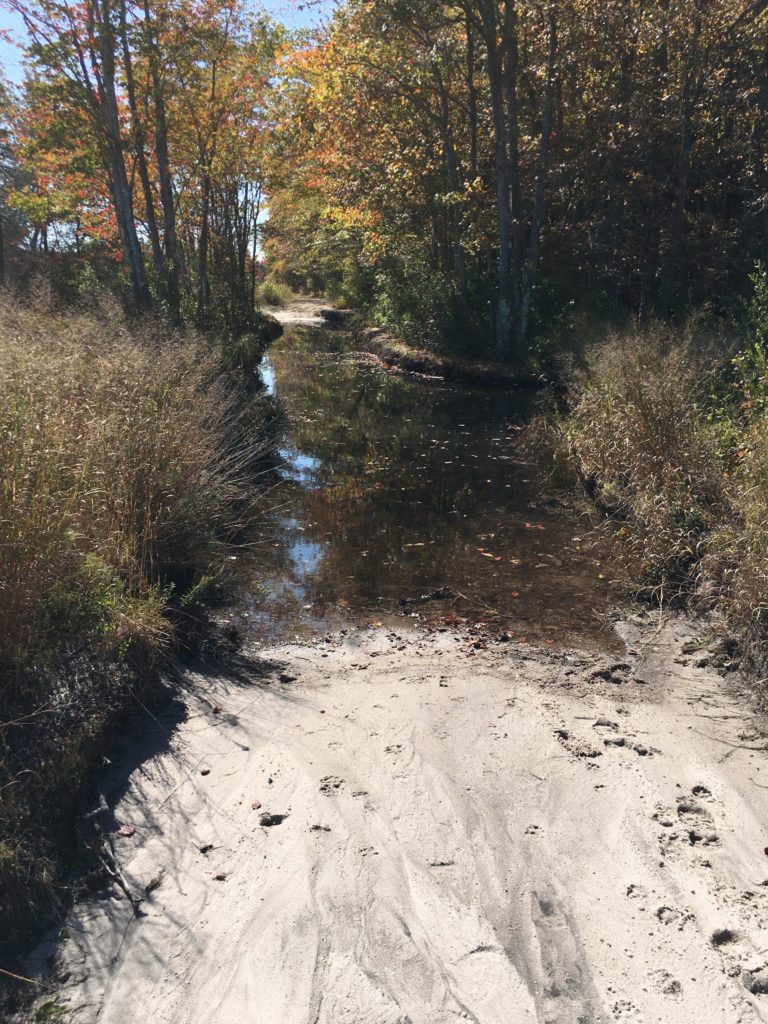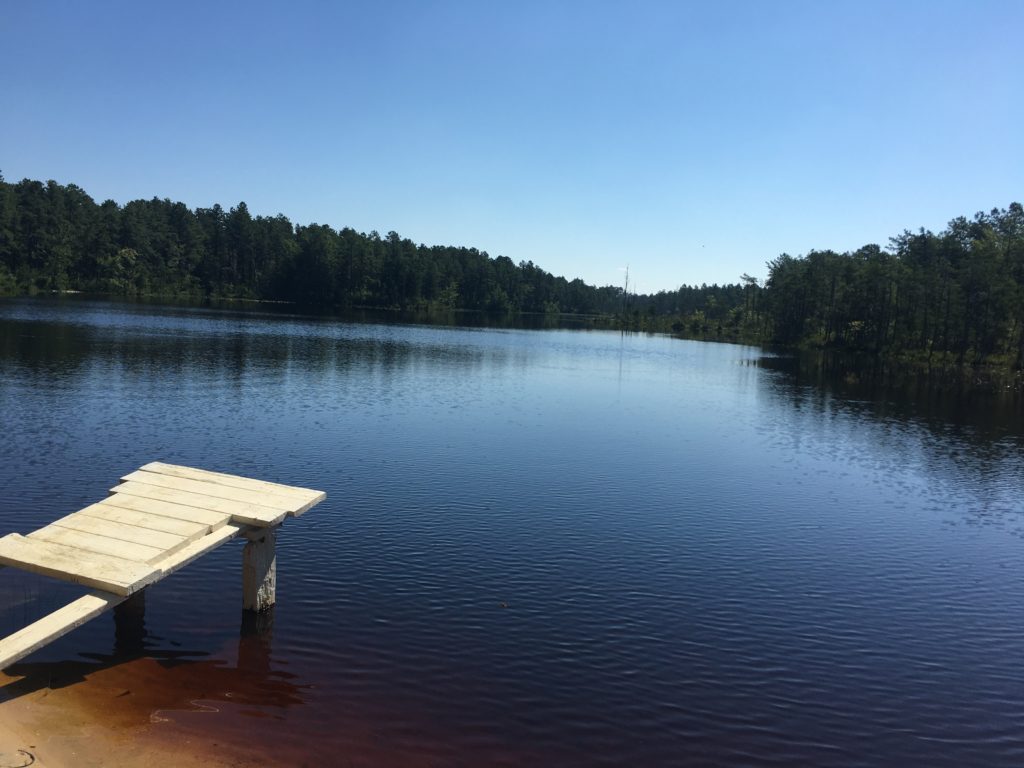
My first time biking at Whitesbog, the birthplace of the blueberry, was almost a year ago. Today was hotter and the water in Hanover Pond and the cranberry bogs looked very inviting.
As peaceful as it is, Hanover Pond is part of what has been called a “highly engineered agricultural water supply system” for growing cranberries. Whitesbog was already a large, established cranberry operation when Gaunt’s Brook was dammed in 1896 to create Hanover Pond. Water from the pond is channeled into Whitesbog’s Upper Reservoir, built around the same time.

